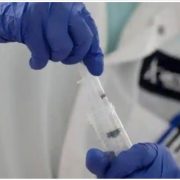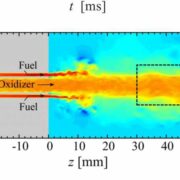‘Electro polymerization’ of metal nanoparticles give plasmons new potential to damp energy

A team led by Rice University chemists Christy Landes and Stephan Link, both related to the Smalley-Curl Institute, have made hybrid particles that combine the unbeatable light-harvesting properties of plasmonic or plasmons nanoparticles with the pliability of catalytic polymer coatings. Their work could help power long-pursued plasmonic applications in electronics, imaging, sensing and medicine.
Plasmons and plasmons nanoparticles are the detectable ripples of energy created on the surface of some metals when excited by light or other input. Nanoantennas are microscopic bits of those metals, like gold, silver and aluminum. Because they’re sensitive to specific inputs counting on their size, shape and sort , they’re tunable and thus useful as sensors, bioimaging agents and whilst therapeutics.
The goal of lead authors Emily Searles, a chemistry grad student , and Sean Collins, a former Carl and Lillian Illig Postdoctoral Fellow at Rice, was to make hybrid nanoantennas with maximum energy transfer from their metal cores to a polymer coating.
They found how to coat gold nanoparticles on an electrochemical support with a light-sensitive, nickel-based polymer. When triggered by light, energy from the gold’s plasmons flows into the coating while the applied potential within the electrochemical cell induces new polymerization from monomers in solution, doubling the coating size. The resulting hybrid damps light scattering from the plasmons by transferring energy into the polymer shell.
Now the hope is that because we’ve put the energy within the polymer, we will now harness that energy to react with other molecules on the surface of the soft interface There are not any reactions included during this paper, but that’s where we would like to travel
The gold-polymer particles studied measured about 35-by-85 nanometers before polymerization and twice that after. At their peak in experiments and simulations, they delivered 50% efficiency in transferring energy from the nanoparticle to the coating, 20% better than the previous benchmark.
Experiments involved putting individual coated particles on an indium tin oxide electrode under a hyperspectral dark-field imaging microscope to record their scattering spectra.
The researchers knew of two possible paths for transferring the sunshine energy between metals and therefore the polymer coating: charge and resonant energy transfer.
These new hybrids, exploiting energy transfer paths, could solve two current challenges with plasmonic photocatalysis,” Link said. “First, efficiencies are often low because charge transfer is slow as compared to other competing processes.
“Second, charge transfer usually requires a sacrificial counterreaction or the catalyst is poisoned over time,” he said. “These energy transfer-based hybrids eliminate the necessity for a sacrificial reaction because both electron and hole transfer occur simultaneously.”
The first challenge was deciding which polymer was best for getting energy from here to there.
“The nanoantennas and therefore the polymer look very similar if you merely measure the sunshine spectrum they absorb,” said Collins, now a lithography process engineer at Intel.
“However, they’re actually absorbing the sunshine in completely alternative ways and therefore the trick is getting those two mechanisms to figure together. The nanoantenna casts an enormous net to tug light energy in and shares most of the catch to the hungry polymer, giving the polymer much more energy than it could ever harvest alone.”
The team determined the plasmonic resonance dipole within the gold and therefore the electric doublet transitions within the nickel polymer aligned when triggered with light, providing a path for charge carriers to migrate from the polymer

























